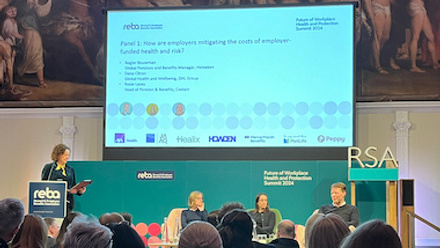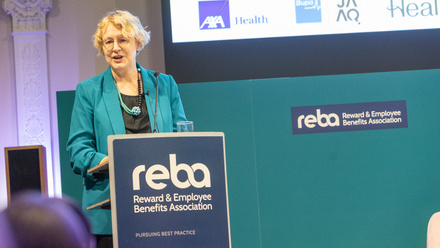How to implement an effective approach to long-term absence staff returning to work

So when it comes to the massively complex area of trying to return long-term absent staff to work, the overriding message is this: draw upon the expertise of the vast array of independent specialists available to you. And for this, you generally need look no further than your group income protection (IP) insurer for the introductions and access.
As highlighted in a recent article in Cover magazine group IP providers have transitioned over recent years from product providers to service providers. They now offer access to huge range of early intervention and rehabilitation services. Some preferring to have in-house specialists, whilst others – such as Generali – preferring to partner with independent experts in their respective fields. However it’s approached, the overriding goal of supporting employers to manage absence is the same.
The business case for getting a grip on long-term absence is simple. Once a person is out of work for six months – the usual deferred period on a group IP policy – they have an 80% chance of being absent from work for five years or more, according to the Health & Safety Executive.
The effects of long-term absence
The original condition the individual went off with will have spiralled into a whole host of other issues during this time. “Long term absence is a ticking time bomb,” says Jessica Bavinton, founder and clinical director of chronic pain and fatigue specialist rehabilitation provider Vitality360. “A whole downward spiral develops: they’ve lost their role and their social connections and they’re no longer contributing. They become less mobile and therefore physically weaker – this adds more symptoms, including lack of sleep and that can lead to more pain, never mind the psychological effects.
“A grieving process begins – they’re perhaps spending more time at home alone with only their only thoughts and worries. They may be on a percentage of pay if lucky, if not they’ll have to go through the painful process of applying for state benefits. It’s typical for many people to develop a secondary diagnosis of anxiety and depression that only starts after going off sick.”
When does it become long-term?
So long-term absence is a problem for business and a problem for the individual. What’s more, it’s incredibly complex and difficult to define. For some, such as Bavinton, long-term absence may be defined as anything over two weeks because the isolation and physical weakening process starts. For others, it’s associated with the usual 6-month deferred period and point of claim on a group IP policy.
Vitality360’s therapists – many of whom have physiotherapy or occupational therapy backgrounds and are also trained in psychological therapies – try to work with employers and group IP providers well before the end of the deferred period. “Conditions may described as ‘chronic’ by the 3-month stage, so it’s critical for employers to take an early intervention approach.
“As part of this, early psychosocial assessments are useful to help unpick the root causes of absence. Basically, early intervention results in better health and return to work outcomes: it’s more cost effective for the employer – in terms of group IP premiums and shorter absence duration – plus less stressful for the employee. Either that, or it brings everything to a head at an early stage and makes it clear if the rehabilitation programme is not going anywhere – for example, work might simply be the issue.”
Triage & tailoring
It’s not uncommon for causes of absence to be related to issues at work, or simply that the person isn’t doing the right job for them. The most important thing is listening to the individual, says Melanie Deer, a consultant occupational therapist, who provides a triage service, working closely with certain group IP providers. This service involves carrying out an assessment of a person’s functional ability to carry out normal activities of daily living, including work, in addition to assisting OH to facilitate a graded return to work.
“My first duty of care is with the individual,” explains Deer. “I’ll look at how the medical diagnosis impacts on a person’s life and work. You have to look at the whole person, not just the medical diagnosis. I then provide information to the insurer’s claims management team and tell them which services are most appropriate. I’ll also do follow-up visits at various intervals to see how things are progressing.
“It’s important to never assume and to always ask what the individual thinks. Occupational Health should never think they have all the answers: if you put in place a rehabilitation programme that just doesn’t work it could be doing more harm than good.”
Deer said that just through listening to one individual who was off work for years, it became clear that all they needed was a close proximity parking space in order to get back to doing their job!
It’s good to talk
Vocational rehabilitation consultants also provide a similar triage-type role. They will carry out a holistic assessment on the individual, in addition to talking to the employer about expectations and potential barriers, before designing a bespoke return-to-work plan.
Alex Freeman is a vocational rehabilitation consultant at Absence Management Solutions. “Most people want to get back to work but most don’t know how to achieve this and employers don’t know how to manage it,” she says.
“I encourage employers to keep in touch with absent employees. Employers worry that this might be seen as harassing the employee but it actually helps the individual psychologically to keep in touch. For example, in cases of work-related stress, the best thing to do is address the root cause and get the individual back to work quickly before it becomes a case of depression.”
Freeman adds its very common for people to go off sick with reported physical conditions that are later revealed as mental ill-health conditions. “There’s still a huge amount of stigma around mental health,” she says.
Mental Health First Aid is now attracting a lot of interest from employers and is an area in which Freeman is trained. “This is all about training key people within an organisation to identify potential problems and signpost appropriately.”
Vary contact to need
Broaching the subject of return to work must be one of the most difficult jobs for HR, especially where an individual is off work with a condition that, to all intents and purposes, used to be considered a death sentence. Cancer, for the sake of an obvious example. But ongoing communication between employer and employee is still important here.
Dr Julie Denning, consultant psychologist at Working Towards Wellbeing, specialists in cancer rehabilitation pathways, says that an increasing number of people are surviving cancer now and wanting to return to work. “We spend over 50% of our time in work – more time than with our loved ones – so a return to work is a vital part of getting a life back on track,” she says.
“We take a light touch approach to communications during the treatment phase, talking about what they like doing, what they miss, how they’re sleeping, how relevant work is to them at that point.
“During recovery, we’ll have more contact and answer questions such as how to do I talk to my employer, what does a phased return look like, and what are reasonable adjustments. We might also talk to their employer if the employee wants us to.
“We can provide referrals – in conjunction with the group IP insurer – to CBT and physiotherapy, perhaps acupuncture or career counselling. It depends what the individual needs. But everything is couched in a return to work context.”
Denning concludes that the key aspects in managing long-term absence may be summarised as follows: early intervention, key partners and communication.
There’s no magic Mr Benn style solution to long-term absence but by focusing on these key aspects, you can’t go far wrong.
Simon Thomas is director – UK Employee Benefits, Generali.
This article was provided by Generali.
In partnership with Generali Employee Benefits Network
Generali Employee Benefits' solutions are to protect and enhance the wellbeing of their workforce.







